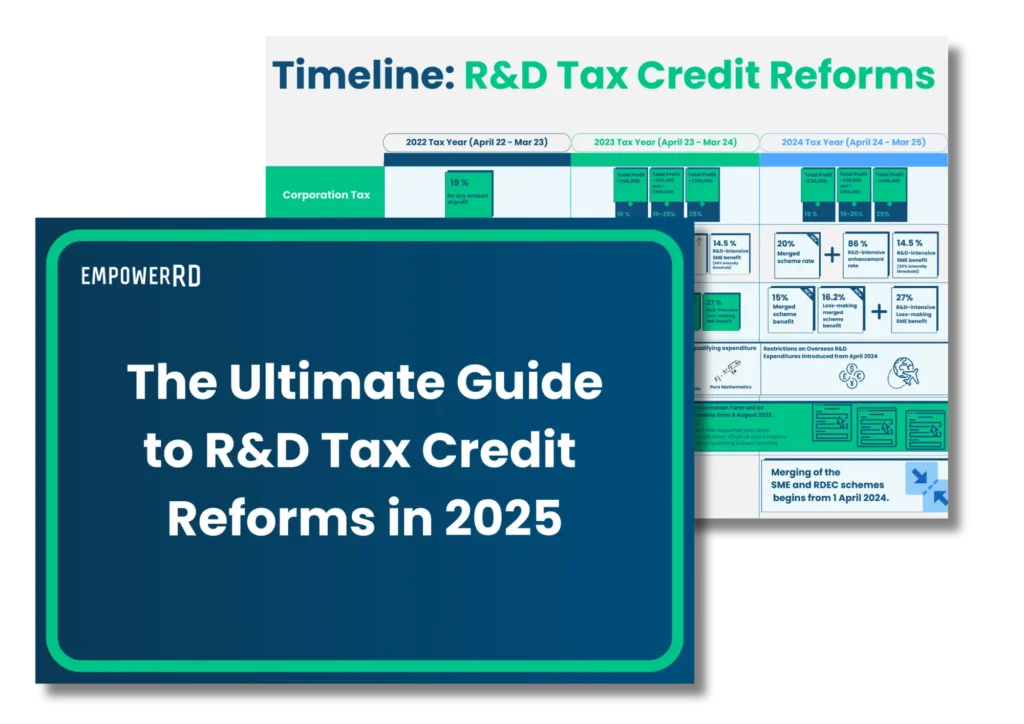According to HMRC’s most recent statistics, the number of startups claiming R&D tax credits was 78,825 in 2021, and the average tax credit claim size for a startup is a whopping £53,663.
With the UK government committed to boosting innovation, these figures will likely continue rising. However, even with the increasing number of startups claiming R&D tax relief, thousands of UK businesses are still not taking advantage of this lucrative government incentive, which can give you up to 27% of your overall R&D-eligible expenditure in cash credit.
One of the most significant hurdles stopping small businesses from claiming is HMRC’s complex eligibility criteria. We know how hard it can be for busy startups to find the time to look into R&D tax credits. As a tax specialists, we’ve assisted hundreds of UK businesses who were unsure about the scheme and guided them successfully through their first claim.
Below we’ve simplified HMRC’s eligibility guidelines to help you understand if your company is eligible for the tax relief scheme.
Have you developed a new or improved product?
If your company has developed a new product, service, or production process in the last year – or updated an existing one – your efforts could qualify as an R&D research project.
Two examples of qualifying projects could be:
- The development of a new software product.
- Modifying your existing production line to increase productivity.
What approach did you take during your project?
HMRC states that your research and development innovation project must have made an ‘advance in science or technology.’ It sounds impressive and grand, but actually, a lot of projects generate an advance.
For example, if you looked at an off-the-shelf technology and instead built a bespoke application or machine to solve your problem, that work will likely qualify as an advance.
Do you employ or subcontract skilled professionals?
The eligibility guideline requires that a skilled and competent professional in your industry plan and oversee the research and development work. This is because their presence indicates that the ‘advance’ was challenging to achieve.
Examples of suitable professionals include:
- Engineers
- Developer
- Scientist
- Skilled craftsman
Did you face any scientific or technological uncertainties?
To qualify for R&D tax credits, making a scientific or technological advance should be a challenge. That’s why they need to see that your project encountered a ‘scientific or technological uncertainty’ for it to qualify for R&D.
Two factors indicate you faced a scientific or technological challenge:
- The solution to your challenge was not readily available or public information.
- A skilled professional working in your industry cannot easily solve a scientific or technological uncertainty.
Which of your costs qualify for R&D tax credits?
You must have spent money on qualifying costs to make a tax credit claim. Here is a list of the typical costs businesses claim for:
- Staff costs
- Subcontractor costs
- Prototypes
- Research contributions
- Externally provided Workers (EPWs)
- Consumable items
- Software licence fees
- Clinical trials volunteer costs
Check your eligibility
Our quick eligibility assessment will help identify whether or not your company is eligible for the tax credit incentive. It will also help determine whether you should apply to the SME or RDEC scheme.
Calculate your tax relief claims value
Our R&D calculator can estimate your potential claim value.
Get in touch
We can help identify all your companies’ qualifying research to maximise your R&D cash credit.
Get in touch with our team today.







